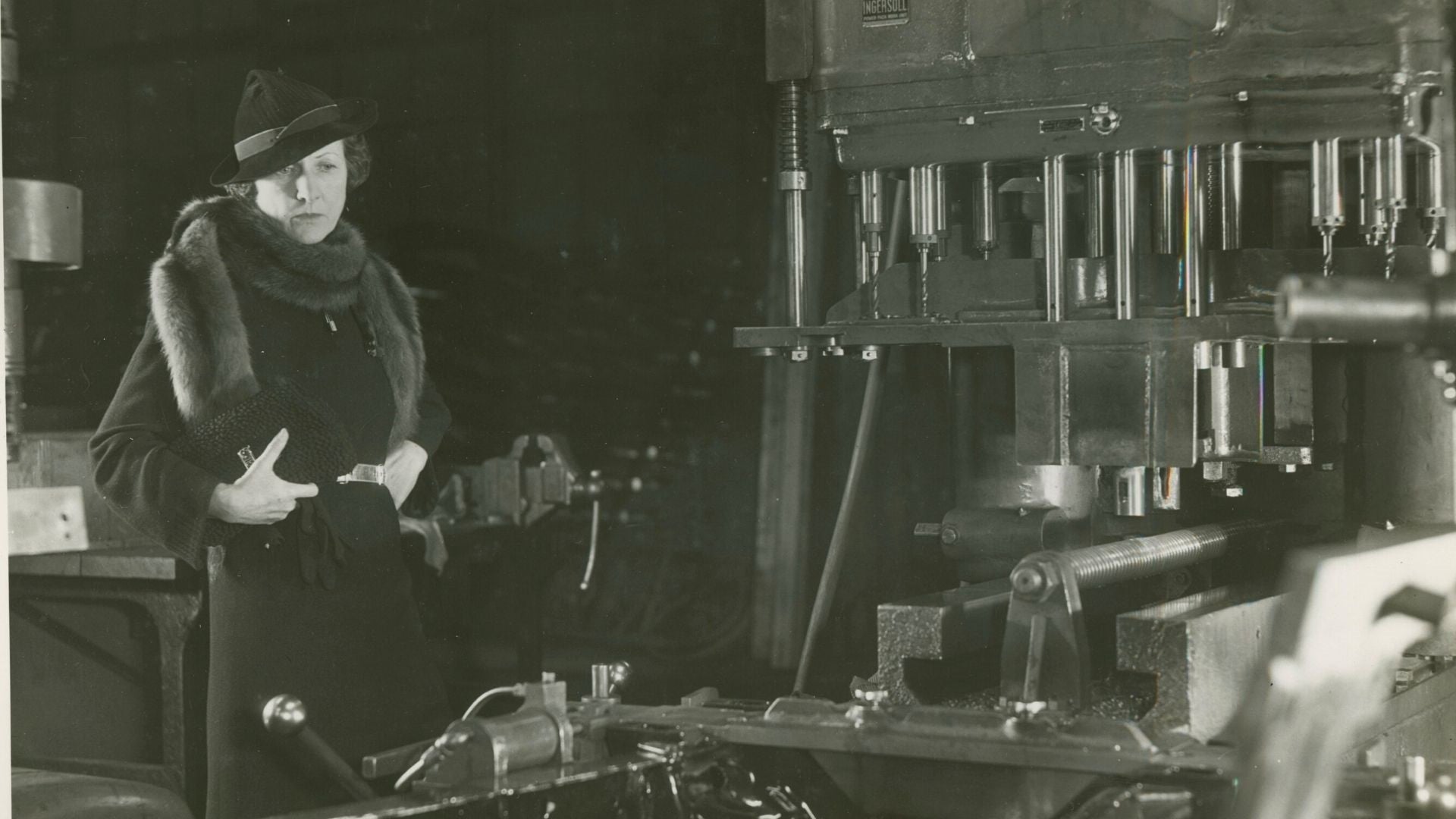[ad_1]
The automotive world has a history with fashion brands: Fiat has teamed up with Gucci for the 500C, Bugatti has used the French luxury brand Hermès, Lamborghini has already had a Versace version and Volkswagen has associated with Adidas for an athleisure look. New York Fashion Week even has an official automotive partner in BMW.
Almost 100 years ago, Helen Dryden caused a stir by applying her 14-year design experience to Vogue magazine to pre-war Studebaker models like the 1936 Dictator, 1937 President, and 1939 Champion. She became a brand in her own right when Studebaker hired her in 1935, and print ads announced her contribution with titles like “Styled Everywhere by the Talented Helen Dryden!” By merging his experiences, Dryden has made his own indelible mark in the automotive world.
This article is part of our ongoing Museum Series, which was created to bring the stories of museums around the world to readers of The Drive. Check out our previous series articles on a restored 1921 Duesenberg Model A, a 1937 drag racing Willys, and James Hetfield’s Art Deco hot rod. For more information on the impact of Studebaker and Dryden, visit the National Studebaker Museum in South Bend, Indiana.
Born and raised in Baltimore, Dryden began working for Vogue in 1910, when she was almost 20 years old. During her fifteen years with them, she designed nearly 100 covers for the magazine. In 1929, newspapers reported that she was the highest paid illustrator and she switched from fashion to industrial design, adding her style to housewares. Then she tried her hand at chrome work for the Revere Corporation.
While designing interior designs for an auto supply company, she caught the attention of Buick Motor Company and Marmon Motor Car Company, who both hired her for design advice. From there, Dryden found a home at the Studebaker Corporation, based in South Bend, Indiana, where she quickly became a star.
Dryden became part consultant, part celebrity designer for Studebaker, who drew on her knowledge to market women. Her designs were noted for their simplicity and elegance inside and out, including the long, flowing hoods she designed and devoid of the central crest popular at the time.
“I ‘set’ the interior with the same attention to detail and taste that I know women demand in their dress today,†said Dryden. Automotive themes magazine in November 1935 on the new president of Studebaker. “With femininity influencing the sale of cars in greater numbers today than ever before, it is essential to determine what will appeal most to your tastes and what will best meet your requirements. His car must offer him a framework adapted to his social life, his clothes, his way of life.
Miniature full bleed
Insert picture
After his stint at Studebaker, Dryden continued to work with the studio of famous designer Raymond Loewy, whom many call the father of industrial design. French Loewy has created an incredible number of designs that you will see today, like the classic International Harvester logo. For Studebaker, Loewy was the mastermind behind the beauty of the streamlined Starliner and, later, the Avanti, which defines style.
Mysteriously, Dryden disappeared from the scene shortly after leaving Loewy’s job, and the story traces her through the tiny hotel room in the East Village, where she lived for some time before her death. in 1971. In a pre-war Art Deco period known for beautiful, fluid design, Dryden made his mark.
Do you have any advice? Send a note to the author: [email protected]
[ad_2]

